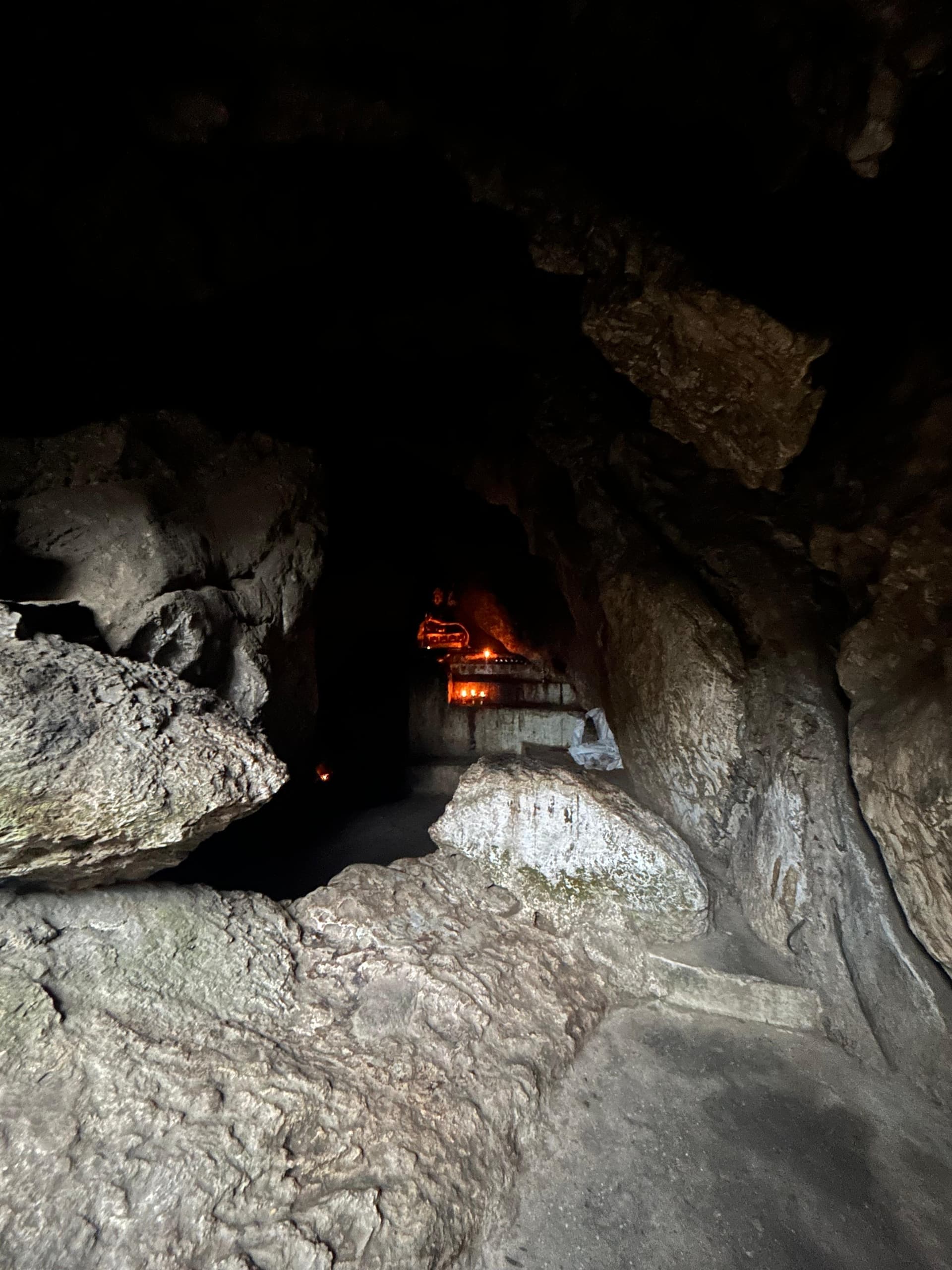Four Mystical Caves of Sikkim You Must Explore for a Soulful Himalayan Escape
05-04-2025
1101

Embark on a transformative journey through Sikkim's Four Sacred Caves, each steeped in spiritual significance and nestled amidst the serene beauty of the Himalayas.These caves—Sharchog Bey Phug, Lho Khandro Sang Phug, Dechen Phug, and Lhari Nyingphug—are believed to have been sanctified by Guru Padmasambhava (Guru Rinpoche) in the 8th century, making them revered pilgrimage sites for Buddhists and seekers of inner peace.
The Four Sacred Caves of Sikkim.
1. Sharchog Bey Phug (The Hidden Cave in the East)
Located in Sangmo Village, about an hour's walk from Ravangla in South Sikkim, Sharchog Bey Phug is traditionally the starting point of the pilgrimage. This expansive cave, approximately a quarter of a mile in length, is believed to extend towards Mount Tendong and Maenam Hill. Local lore holds that Guru Rinpoche blessed this cave first, making it a significant site for meditation and reflection.
2. Lho Khandro Sang Phug (The Secret Cave of the Dakini in the South).
Situated near Reshi, about 5 kilometers south of Legship along the Rangit River, this cave is easily accessible and renowned for its association with the dakini Vajravarahi. Adjacent to the cave are the Phur Tsa Chu hot springs, believed to possess medicinal properties. Pilgrims can find solace in the serene environment, with the gentle sounds of the river enhancing the meditative experience.
3. Dechen Phug (The Cave of Great Happiness in the West).
Perched above Darap Village near Pelling in West Sikkim, reaching Dechen Phug requires a trek starting from Nambu Village. The journey, which takes approximately three days, winds through dense forests and offers glimpses of Sikkim's rich biodiversity. The cave itself is a tranquil sanctuary, providing a perfect setting for contemplation and spiritual rejuvenation.
4. Lhari Nyingphug (The Cave of the Heart of the Deity in the North).
Considered the holiest among the four, Lhari Nyingphug is located north of Tashiding Hill. Accessing this sacred site involves a challenging two-day trek from Labdang Village in West Sikkim. The cave comprises seven chambers, each dedicated to a specific deity, offering pilgrims a profound spiritual experience amidst the untouched beauty of the Himalayan landscape
Suggested Itinerary for the Sacred Caves Pilgrimage.
Day 1: Arrival in Ravangla
- Arrive in Ravangla and settle in at a local homestay or guesthouse.
- Acclimate to the altitude and explore local attractions like Buddha Park.
- Meet your local guide and get briefed about the pilgrimage route.
- Overnight stay at the homestay/Guest House.
Day 2: Visit to Sharchog Bey Phug (Eastern Cave)
- Drive to Sangmo Village, the starting point for the cave hike.
- Trek to Sharchog Bey Phug, also known as the Cave of the Rising Sun.
- Spend quiet time meditating inside the sacred cave.
- Return to Ravangla and rest for the next day's journey.
Day 3: Journey to Reshi & Lho Khandro Sang Phug (Southern Cave)
- Drive to Reshi near Legship, surrounded by lush greenery.
- Explore the sacred Lho Khandro Sang Phug, believed to be the Cave of the Dakinis.
- Relax in the Phur Tsa Chu hot springs situated just below the cave.
- Overnight stay in Reshi or Pelling based on preference.
Day 4: Trek Begins to Dechen Phug (Western Cave)
- Travel to Nambu Village, the base for the Dechen Phug trek.
- Begin your scenic forest trek towards the cave.
- Pass through remote villages and beautiful landscapes.
- Set up camp en route and enjoy an evening in nature.
Day 5: Explore Dechen Phug
- Resume the final stretch of the trek to Dechen Phug.
- Reach the mystical Cave of Great Bliss and spend time inside.
- Practice meditation or light butter lamps for blessings.
- Camp overnight near the cave amidst peaceful surroundings.
Day 6: Return from Dechen Phug
- Trek back to Nambu Village after breakfast.
- Rest and refresh upon arrival in the village.
- Optional: Explore nearby sites or mingle with locals.
- Overnight stay in or near Nambu.
Day 7: Trek to Lhari Nyingphug (Northern Cave)
- Drive to Labdang Village, the base for the Lhari Nyingphug trek.
- Begin your two-day trek through alpine forests and rugged terrain.
- Enjoy breathtaking views and moments of silence along the trail.
- Camp at a scenic spot before reaching the cave.
Day 8: Reach and Explore Lhari Nyingphug
- Arrive at Lhari Nyingphug, the most secluded and powerful of the caves.
- Explore the seven spiritual chambers inside the cave.
- Spend the day in reflection, meditation, and prayer.
- Camp overnight in the serene high-altitude wilderness.
Day 9: Return to Labdang
- Begin your descent from the cave back to Labdang Village.
- Celebrate the completion of your sacred journey with a traditional meal.
- Share experiences and gratitude with your group and guides.
- Rest and prepare for departure.
Day 10: Departure
- Drive from Labdang to your next destination (Siliguri/NJP).
- Reflect on the spiritual insights gained during the journey.
- End the pilgrimage with blessings and inner peace.
Tips for the Journey
- Hire local guides familiar with the terrain and culture.
- Ensure physical preparedness for moderate to difficult treks.
- Respect local customs and religious sentiments.
- Carry reusable water bottles, snacks, and weather-appropriate clothing.
- Best time to visit: March to May & September to November.
This Sacred Cave Pilgrimage is more than a physical journey — it is an inner quest for peace, clarity, and connection. As you walk the same paths once traversed by saints and sages, you’ll not only explore the spiritual heart of Sikkim but also discover something sacred within yourself.